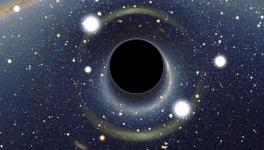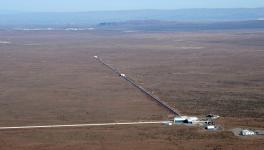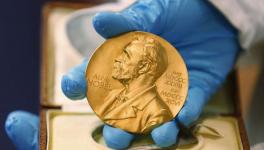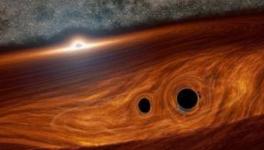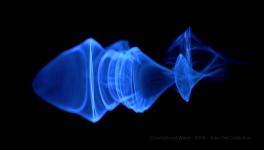Most Powerful Black Hole Collision Detected Using Gravitational Waves
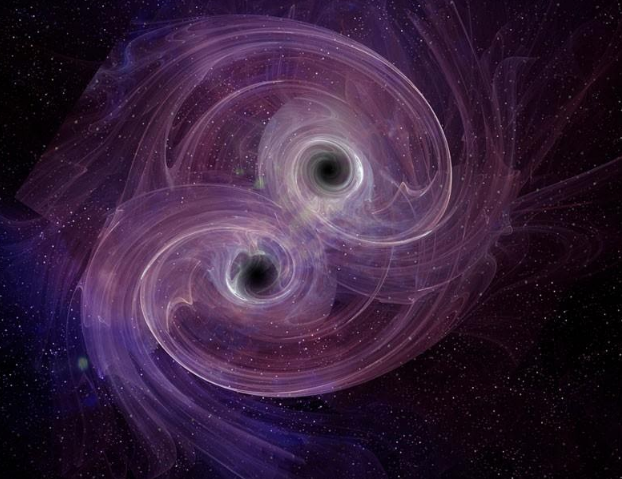
Image Courtesy: Nature.
Two black holes collided and fused when the universe was half the age of what it is today, with one having mass of 85 suns and merged into a single entity of nearly 150 solar masses (mass of the sun). Astronomers have been successful in detecting this event that happened nearly 7 million years ago with the help of gravitational waves. In the field of black hole studies, this marks the most powerful, most distant and most perplexing collision of black holes that has ever been detected. The findings have been published in two papers, one in Physical Review Letter and the other in The Astrophysical Journal Letters, which came out on September 2.
The event was detected in May and named as GW190521. The Laser Interferometer Gravitational Wave Observatory (LIGO) in US and VIRGO observatory near Pisa, Italy jointly worked to detect the massive event.
This “wonderfully unexpected” event, in the words of Ilya Mandel, a theoretical physicist at Monash University, Australia confirms the existence of ‘intermediate mass’ black holes. Theoretically, the existence of the intermediate mass black holes were predicted, which this detection further confirms. The intermediate mass black holes have much more mass than a typical star like that of the sun, but not as massive as the ‘supermassive black holes’ in the centre of the galaxies.
The GW190521 merging event was calculated to have occurred at a distance of 150 billion trillion kilometres from the detection point.
HOW THE EVENT WAS DETECTED WITH THE HELP OF GRAVITATIONAL WAVES?
Gravitational waves were proposed by Albert Einstein a century back, as part of his general theory of relativity, considered to be the most important of all his works. These waves are continuously rippling the universe. When a massive and violent event like that of the collapse of black holes occurs in space, these events create ripples or waves in the space-time fabric covering the entire universe. According to Einstein’s theory, the universe can be imagined like a huge plain cloth. In place of cotton or other threads that make a cloth, the fabric of the universe is made up of the space-time matrix. Some violent and massive events, no matter when it had occurred, creates the waves in the space-time fabric. These are the gravitational waves. The gravitational wave detectors like LIGO and VIRGO detect these waves some of which had occurred billion and trillion of kilometres away and some billion years ago. The travelling waves would at some point cross these detectors, which would then detect the waves.
The GW190521 event also created such gravitational waves in the space-time fabric of the universe some 7 million years ago and the LIGO-VIRGO detector could detect them. After receiving the signals, too transient for common imagination – almost one tenth of a second, these were then analysed computationally and astronomers came out with the conclusions.
HOW GRAVITATIONAL DETECTORS WORK?
In a gravitational wave detector, a laser beam is split into two paths. The lasers in the separate paths bounce back and forth between mirrors and the two light beams are eventually sent to a photodetector. When a gravitational wave crosses the detector, it disturbs the set up and as a result the travelling laser beam shows slight variation in its length which the photodetector can detect. The theory of gravitational waves says that when such a wave crosses some space it slightly modifies the space by either squeezing or stretching it. This change in space results in the laser beams giving out different lengths.
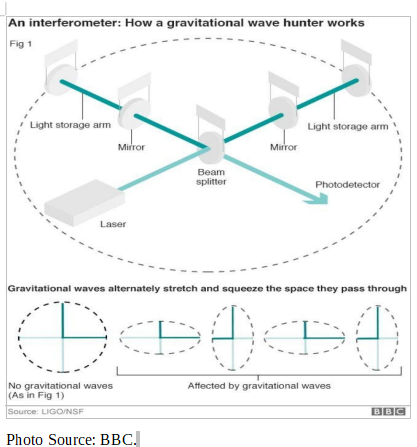
Although, Einstein had predicted gravitational waves a century back, but, it could be detected practically only in 2015, which also earned the Nobel Prize in Physics in 2017 for the founders of LIGO.
Black holes are formed when stars die, meaning, when stars exhaust their nuclear fuel they undergo explosive core collapse and eventually a black hole is formed. The physics of star estimates that black hole formation with stars of mass between the range of 65 to 120 solar masses is not possible. This is because, dying stars in that mass range will tear themselves apart and will be left with nothing more to form a black hole.
If this estimation is correct, then the 85 solar mass object calculated in the current detection study would contradict. One possibility could be that it was the result of an even earlier event of black hole merging.
Commenting on it, Prof Martin Hendry of Glasgow University, UK was quoted to have said— “We're talking here about a hierarchy of mergers, a possible pathway to make bigger and bigger black holes. So, who knows? This 142-solar-mass black hole may have gone on to have merged with other very massive black holes - as part of a build-up process that goes all the way to those supermassive black holes we think are at the heart of galaxies.” His comments indicate that it has implication for the way the universe has evolved.
Get the latest reports & analysis with people's perspective on Protests, movements & deep analytical videos, discussions of the current affairs in your Telegram app. Subscribe to NewsClick's Telegram channel & get Real-Time updates on stories, as they get published on our website.









